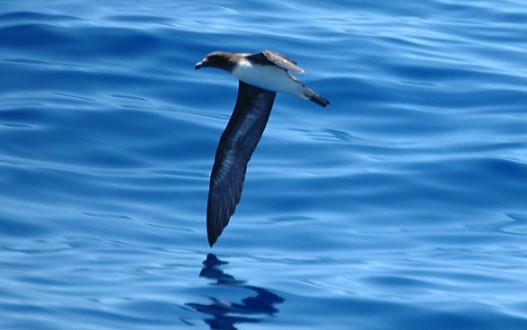Family: The Tahiti petrel (Pseudobulweria rostrata) belongs to the family Procellariidae.
Behavior and Habitats: The Tahiti Petrel is a tropical gadfly petrel that has only recently been found to visit eastern Australian coasts. Among its races, one of its breeding grounds is still undiscovered, making it one of the least known. During summer and autumn, it nests on a few islands in the South Pacific and Indian Oceans, and it disperses more widely at sea during winter and spring.
Despite this, the majority of records for inshore Australian petrels have been made between December and May, possibly during the breeding season. Tahiti petrels visit land only at night and when nesting. This seabird is a tireless flier; it swoops and soars like a Great-winged Petrel but is lower on windy days and flaps leisurely in calm conditions.
Read More – Wilson’s Storm-Petrel (Oceanites oceanicus)

Identification: As adults, both sexes have stocky bodies. The head, foreneck, upper breast, long upper wings, and tail are all uniformly dusky-brown. The lower breast, belly, and crissum are white. There is a uniform shade of dusky brown on the underwings. The eyes are dark brown. The bill is black, massive, and down-sloped. The toes and webs of the feet are black; the feet are flesh-colored. IMMATURES: Similar to adults. Downy Young: It is probably dark gray.
Other Name: It is also known as Peale’s Petrel.
Size: A Tahiti petrel measures 380–440 mm in length.
Call: During the night, Tahiti Petrel nesting colonies emit noisy squawks, trills, and wheezes.
Diet: The bird probably eats crustaceans, squid, and small fish while flying over the ocean.
Nesting and Breeding: The nesting and breeding season occurs between January and May in the tropical southwestern Pacific, on slopes and mountains close to the sea. Nests of Tahiti Petrels are natural hollows under rocks or burrows excavated by the bird. One white egg is laid by the Tahiti Petrel.
Distribution: Tahiti Petrels are found in two widely separated populations, one centered on the Mascarene Islands in the Indian Ocean and another in the tropical South Pacific, nesting on islands between the Bismarck Archipelago, New Caledonia, and Marquesas.
Races: One of the four races breeds solely on New Caledonia, and it’s the only one recorded in Australian waters with certainty.
Read More! Blue-Footed Booby – Pride Due to Marvelous Feet







